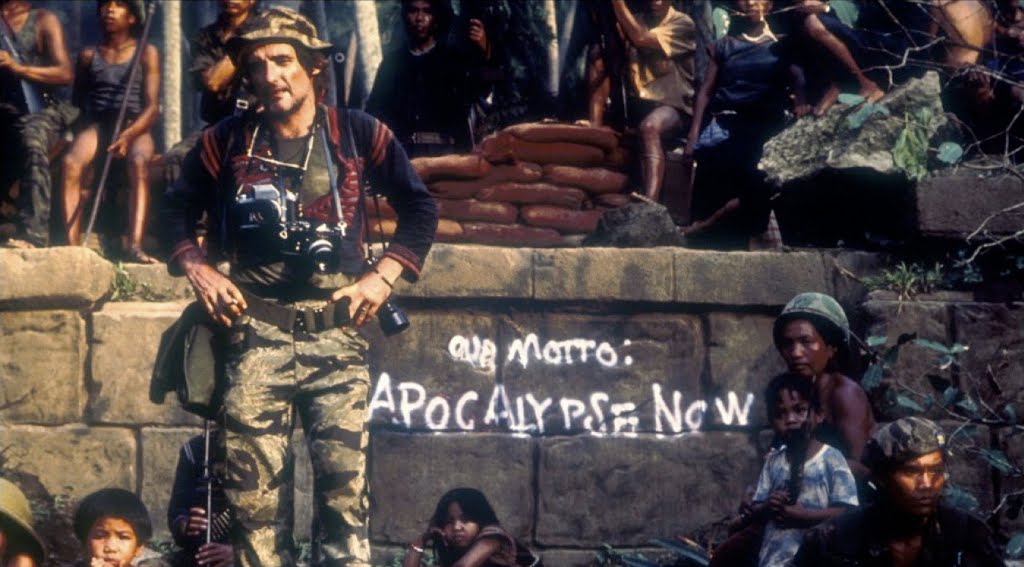Freddie Francis was an odd duck. If you've heard of him, it's as Hammer studio's number two director (after Terence Fisher). He gave the world gems like Paranoiac and Day of the Triffids He delivered such misfires as Trog, The Creeping Flesh and The Deadly Bees to the british aisles during the 60s and 70s. Direct worth a damn he often could not; he was however, a pretty goddamned legendary cinematographer, up there with the the other Freddie of British camera magic, Young, the man behind Lawrence of Arabia. There's some adage or other about bands who aren't very interesting doing their best work covering other songs. It isn't quite the same thing but for whatever reason Francis couldn't give Christopher Lee an iota of direction in his own movies to save his life, but he was capable of making other people's work look gorgeous. Don't let me downplay his talent, he captured some of the most arresting photography ever committed to film.
Now the way that some of you may have ever encountered Francis performing his side job is if you've ever seen any of David Lynch's lesser known work. He was a cinematographer before he was a director, but before that, he apprenticed for a still photographer in Ealing, and then (like many other men in the horror film profession) became a war photographer. When he left the army he worked under cinematographers Oswald Morris and Christopher Challis on films like John Huston's Moby Dick and Powell and Pressburger's Tales of Hoffmann (little six degrees for you, George Romero's favorite film as a child was Tales of Hoffmann (he and Martin Scorsese unknowingly used to rent it while the other didn't have it out) and Romero would cement his cult status with Tom Savini's make-up effects, who, like Francis, had also been a war photographer, on their magnum opus Dawn of the Dead. Imagine if Francis had ever photographed a Romero film...man, oh man). Anyway, he soon became a cinematographer, and won an academy award for his photography on Jack Cardiff's Sons and Lovers. If Jack Cardiff trusts you behind the camera - he was no slouch there himself - then you knew a major talent had arrived. His tenure as a technician was to be short-lived, as he soon went into directing full-time.
He never came close to duplicating his success as a cinematographer when he directed films (could be because they didn't trust cinematographers to make great films, so he got handed films from the bottom of the barrell. Jospeh V. Mascelli had sort of set a precedent I suppose). As it stands, most of his films were just good ideas that showed promise, but had no follow through and precious little of the mindboggling visual flare he exhibited as a cameraman. A budget the size of a caddis fly will have that effect. In the 80s through what I take to be a sort of "he's around, why don't you ask him" series of events, Francis went behind the lens to photograph David Lynch's The Elephant Man. He would give up directing in 1986 and go on to do some pretty amazing things with a camera lens. Following The Elephant Man, Lynch hired him again for Dune (a black eye, to say the least, but nothing he couldn't recover from). Soon after he did the cinematography for Glory, for which he won his second academy award. For a 72 year old man to win an oscar for something he hadn't done professionally in 20 years must have been a hell of a thing. He deserved it too. Glory, for all the things I'm not crazy about, is a fairly beautiful film, even if it pales in comparison to the work he did earlier in his life on the likes of The Innocents. And it wouldn't even approach the beauty of his last film.
He would do Scorsese's ill-conceived remake of Cape Fear, Bob Hoskin's all-but-entirely forgotten Rainbow, but the late career work that really makes him immortal to me is work on David Lynch's The Straight Story. I wasn't expecting too too much from this movie. Produced by Disney during Lynch's downtime between being shunned by NBC and praised by college kids, I knew it was a message movie with heart and very little of Lynch's usual flare (by which I mean hyper-sexualized violent behavior and vomit-enducing, limitless villainy). No, this was a quiet sort of film. We follow an elderly man who travels several hundred miles to visit his dying brother on a lawnmower. This is based on an actual story, stars Sissy Spacek and Richard Farnsworth and is sort of like an uninteresting story someone might have told on Twin Peaks. What caught me completely off guard were the images; the midwest has never looked so striking; so breathtaking. How Francis lost the academy award I simply can't fathom. This is exactly what was missing from all Lynch's other work; images that made the story grander than itself, that could reduce anyone to tears (especially in the context of the story), that scream out for humanity. Here's what man hath wrought; we have to live with it, and this is without question the most beautiful it will ever get unless man walks back into the woods.
Francis died not long after shooting finished for The Straight Story. Lynch has since abandoned celluloid for digital. He's experience a little in the way of a resurgence in conversation about the art of cinematography, but I feel his legacy is trapped beneath his subpar work as director or his predictable work on Glory. He could work magic, but often hid his talent away. I'm glad someone thought to coax a few more truly striking images out of him before he left us for good.



No comments:
Post a Comment